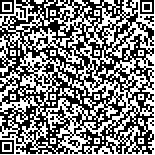| Quote
: |
龚健婷, 吕仁华, 李青, 蒋建伟, 周璐, 周艳, 雷建波, 艾坤.血流限制性训练联合头针治疗中风患者平衡功能的临床研究[J].湖南中医药大学学报英文版,2025,45(3):480-485.[Click to copy
] |
|
| |
|
|
| This paper
:Browser 1078times Download 522times |
| 血流限制性训练联合头针治疗中风患者平衡功能的临床研究 |
| 龚健婷,吕仁华,李青,蒋建伟,周璐,周艳,雷建波,艾坤 |
| (湖南中医药大学, 湖南 长沙 410208;湘潭市中心医院, 湖南 湘潭 411199;郴州市第一人民医院, 湖南 郴州 423000;湘潭市第六人民医院, 湖南 湘潭 411102) |
| 摘要: |
| 目的 探讨血流限制性训练结合头针治疗对中风患者平衡功能的影响。方法 选取52例符合纳排标准的中风患者,采用随机数字表法将患者平均分为对照组26例、观察组26例。对照组和观察组均采用传统康复治疗,此外,对照组施加20%一次最大重复量(1RM)踏车训练结合头针治疗,观察组在血流限制下施加20%1RM踏车训练结合头针治疗。两组患者每次踏车训练时长为20 min,每天2次,共治疗4周。观察并对比两组患者在治疗前后股四头肌肌力、睁眼及闭眼下的运动长度和运动椭圆面积、Berg量表评分、阻力测试得分、下肢肢体围度等各项数据的变化。结果 治疗后,两组患者股四头肌MMT评分、Berg量表评分均较治疗前明显提高(P<0.01),且观察组均高于对照组(P<0.05,P<0.01);两组患者睁眼及闭眼状态下运动长度和椭圆面积数值均较治疗前明显降低(P<0.01),且观察组均低于对照组(P<0.01);对照组在踏车阻力及肢体围度方面均较治疗前比较差异无统计学意义(P>0.05),而观察组踏车阻力及肢体围度明显高于治疗前(P<0.01),且观察组均高于对照组(P<0.05,P<0.01)。结论 血流限制性训练结合头针治疗提高了患者下肢肌肉力量及平衡能力,进而改善了中风患者的平衡功能。 |
| 关键词: 中风 头针 血流限制性训练 平衡功能 下肢肌肉力量 |
| DOI:10.3969/j.issn.1674-070X.2025.03.013 |
| Received:July 22, 2024 |
| 基金项目:湖南省临床医疗技术创新引导项目(2021SK50310);湘潭市医学科研资助项目(2021-xtyx-52)。 |
|
| Clinical research of blood flow restriction training combined with scalp acupuncture on balance function in stroke patients |
| GONG Jianting, LVU Renhua, LI Qing, JIANG Jianwei, ZHOU Lu, ZHOU Yan, LEI Jianbo, AI Kun |
| (Hunan University of Chinese Medicine, Changsha, Hunan 410208, China;The Central Hospital of Xiangtan, Xiangtan, Hunan 411199, China;Chenzhou First People's Hospital, Chenzhou, Hunan 423000, China;Xiangtan Sixth People's Hospital, Xiangtan, Hunan 411102, China) |
| Abstract: |
| Objective To investigate the effects of blood flow restriction training (BFR) combined with scalp acupuncture on balance function in stroke patients. Methods Fifty-two stroke patients who met the inclusion and exclusion criteria were selected and randomly assigned to control group (n=26) and observation group (n=26) using the random number table method. Both two groups received traditional rehabilitation therapy. Additionally, the control group underwent cycling training at 20% of one-repetition maximum (1RM) combined with scalp acupuncture, while the observation group underwent cycling training at 20% of 1RM under BFR combined with scalp acupuncture. Two groups of patients underwent 20 min of cycling training twice a day for a total of four weeks continuously. The changes in quadriceps muscle strength, movement length and movement ellipse area with eyes open and closed, Berg Balance Scale (BBS) scores, resistance test scores, and lower limb circumference were observed and compared between the two groups before and after treatment. Results After treatment, the MMT scores of quadriceps muscle and BBS scores were significantly higher in both groups compared with before treatment (P<0.01), and the observation group had higher scores than the control group (P<0.05, P<0.01). The movement length and movement ellipse area with eyes open and closed were significantly lower in both groups compared with before treatment (P<0.01), and the observation group had lower values than the control group (P<0.01). There was no statistically significant difference in cycling resistance and limb circumference in the control group compared with before treatment (P>0.05), while the observation group showed significantly higher cycling resistance and limb circumference compared with before treatment (P<0.01), and the observation group had higher values than the control group (P<0.05, P<0.01). Conclusion BFR combined with scalp acupuncture improves lower limb muscle strength and balance ability, thereby improving balance function in stroke patients. |
| Key words: stroke scalp acupuncture blood flow restriction training balance function lower limb muscle strength |
|

二维码(扫一下试试看!) |
|
|
|
|


